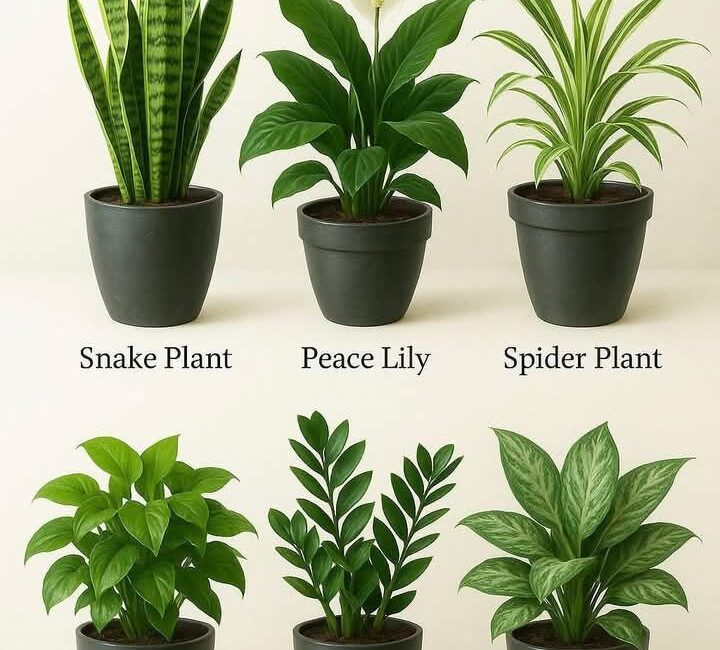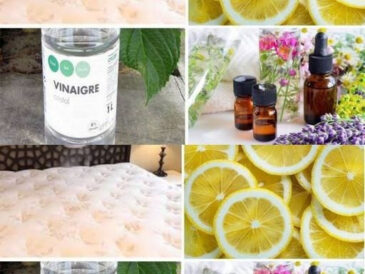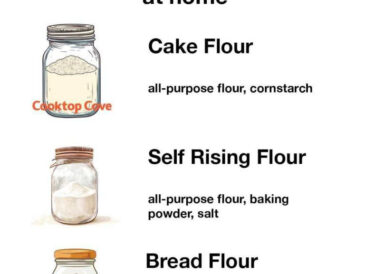🌱 Care Tips:
- Light: Prefers bright, indirect light, but tolerates low light.
- Water: Water when the top inch of soil feels dry.
- Humidity: Appreciates occasional misting or placement in a humid room.
- Soil: Well-drained potting mix.
🌿 4. Pothos (Epipremnum aureum)
Best for: Hanging baskets, bookshelves, bathrooms
Air Benefits: Filters formaldehyde, benzene, toluene
Nicknamed “Devil’s Ivy” for its impossible-to-kill reputation, Pothos is one of the most popular houseplants thanks to its beautiful trailing vines and heart-shaped leaves. It adapts to a wide range of conditions and grows like wildfire.
✅ Why It’s a Must-Have:
- Low-light tolerant: Perfect for darker corners.
- Beautiful vines: Great for creating vertical greenery or hanging displays.
- Air detoxifier: Efficient in absorbing indoor pollutants.
🌱 Care Tips:
- Light: Low to bright indirect light (no direct sun).
- Water: Let soil dry between watering.
- Humidity: Moderate; it can tolerate dry indoor air.
- Toxicity: Toxic if ingested—keep away from pets.
🌵 5. ZZ Plant (Zamioculcas zamiifolia)
Best for: Entryways, hallways, offices
Air Benefits: Filters xylene, toluene, benzene
If you want a plant that basically takes care of itself, the ZZ Plant is for you. Its waxy, deep green leaves are beautiful and reflect light, bringing a touch of sophistication to any space. It’s incredibly resilient and can survive weeks of neglect.
✅ Why It’s a Must-Have:
- Survives in very low light: Ideal for offices and dark rooms.
- Drought-tolerant: Stores water in its rhizomes.
- Low maintenance: Thrives with minimal care.
🌱 Care Tips:
- Light: Tolerates low to bright indirect light.
- Water: Water every 2–3 weeks, or when soil is fully dry.
- Soil: Well-drained mix.
- Toxicity: Toxic to pets and humans—avoid ingestion.
🌸 6. Chinese Evergreen (Aglaonema)
Best for: Bedrooms, offices, shaded corners
Air Benefits: Removes formaldehyde and benzene
The Chinese Evergreen is a striking and colorful houseplant that brings tropical flair indoors. It’s known for its tolerance to poor lighting and its ability to thrive on minimal care, making it ideal for busy individuals or first-time plant owners.
✅ Why It’s a Must-Have:
- Colorful leaves: Comes in variegated shades of green, silver, pink, and red.
- Low-light champion: Thrives even in deep shade.
- Effective detoxifier: Targets airborne toxins commonly found in furniture and paint.
🌱 Care Tips:
- Light: Prefers low to medium indirect light.
- Water: Water when topsoil dries out.
- Humidity: Likes humid environments—mist occasionally.
- Toxicity: Toxic to pets and children.
🌿 Why Air-Purifying Plants Matter
According to studies by NASA and other environmental agencies, indoor plants can:
- Improve air quality
- Increase humidity
- Reduce stress
- Enhance mental clarity
- Improve sleep quality
As we seal our homes for better insulation, indoor pollution rises due to off-gassing from furniture, flooring, and electronics. These six plants can naturally counteract that, creating a safer and more comfortable living space.
✅ Final Thoughts: Why Number 6 (Chinese Evergreen) is My Favorite
While all of these plants are amazing in their own right, the Chinese Evergreen (number 6) is my personal favorite. Why? Because of its stunning visual appeal and unmatched resilience. It brings a pop of color to any corner, thrives in near darkness, and asks for almost nothing in return.
Whether you live in a city apartment, a suburban home, or just want to create a more serene and healthy workspace, incorporating these air-purifying houseplants into your environment is a smart and rewarding choice.
Breathe easier. Live greener. And let nature do its magic—right in your living room.




